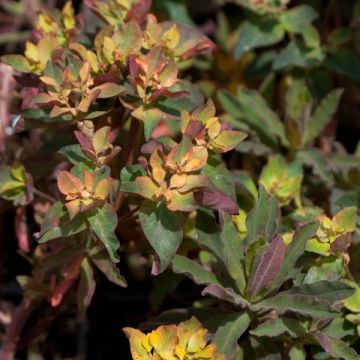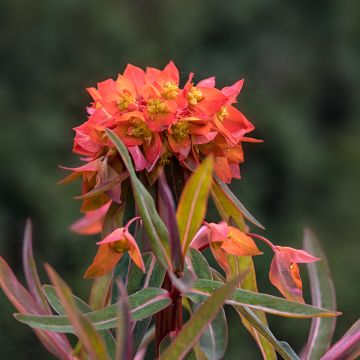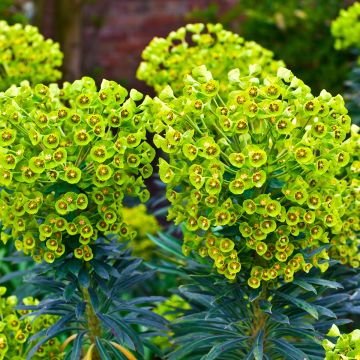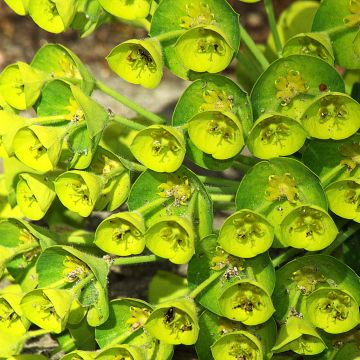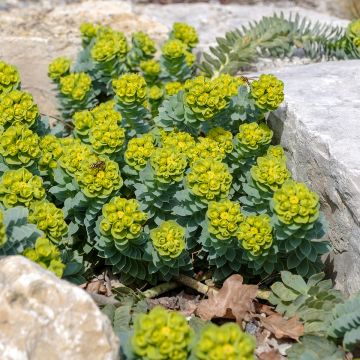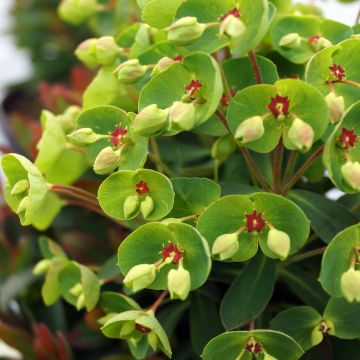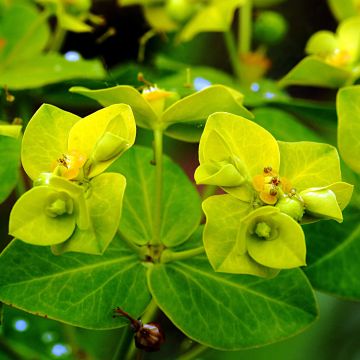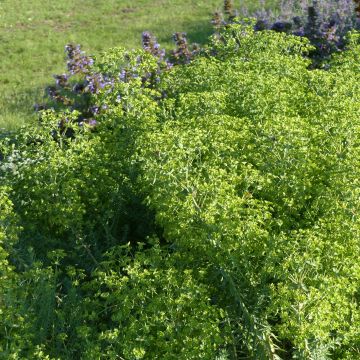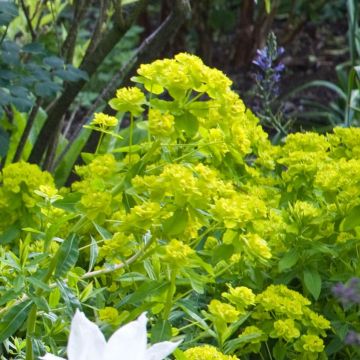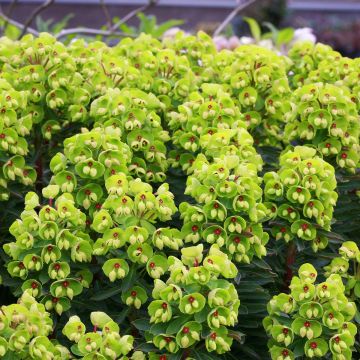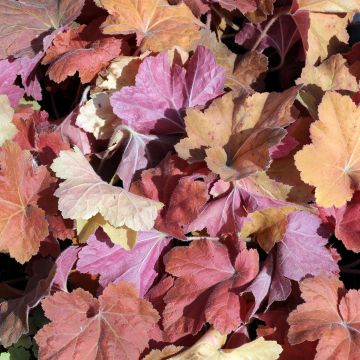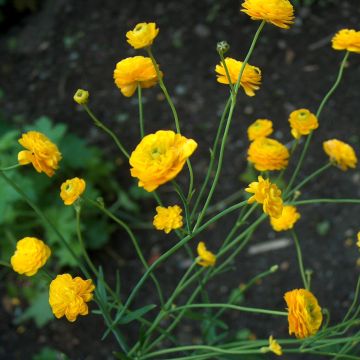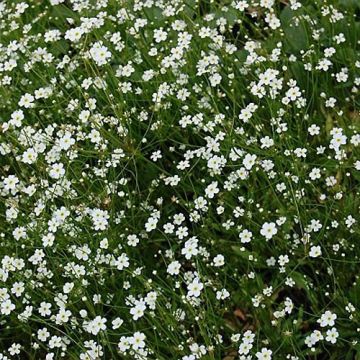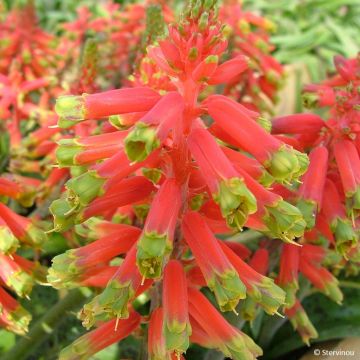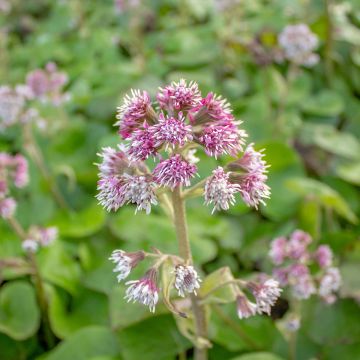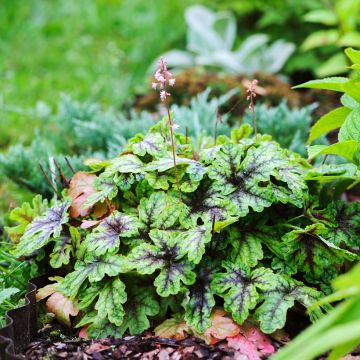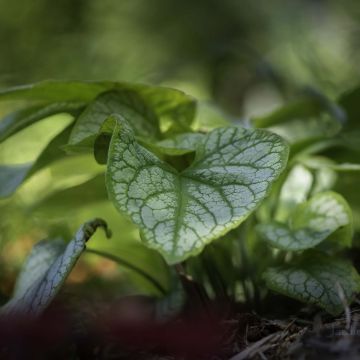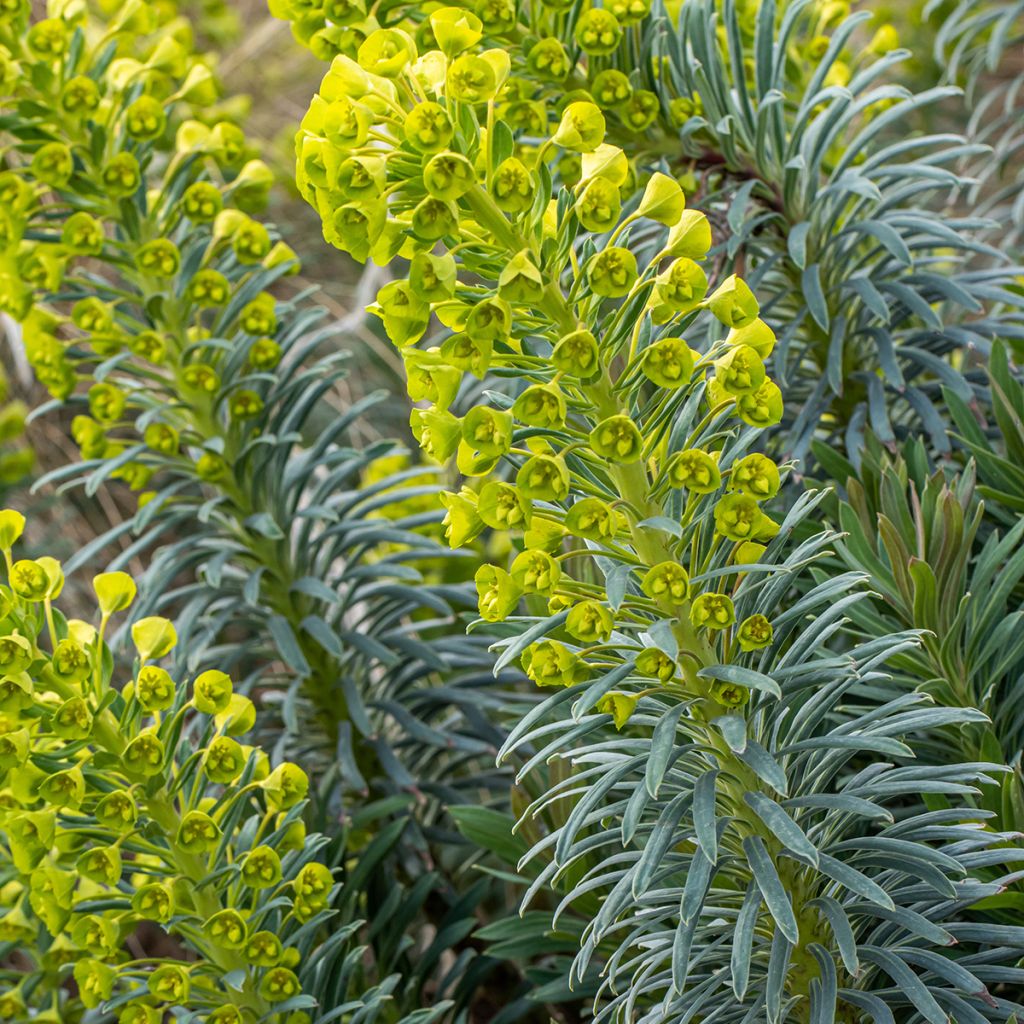

Euphorbia characias Humpty Dumpty - Spurge
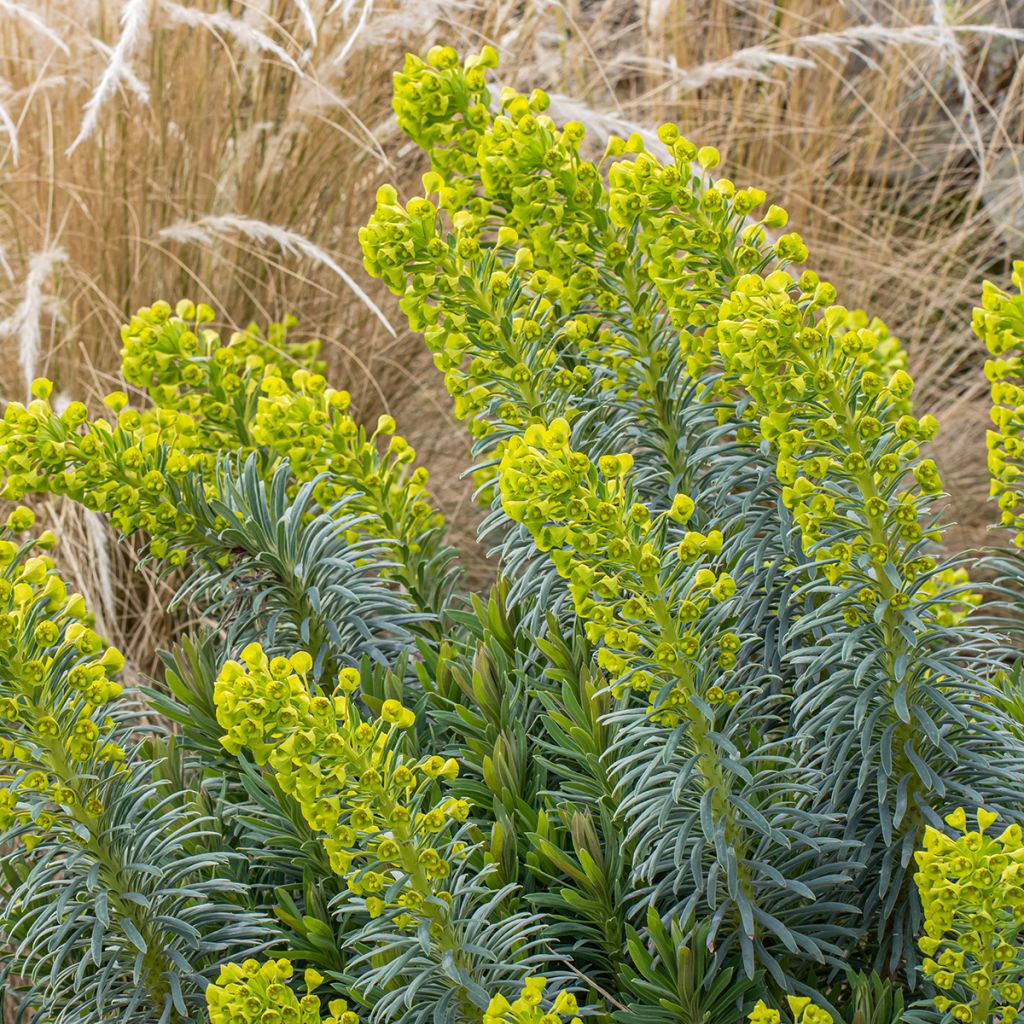

Euphorbia characias Humpty Dumpty - Spurge
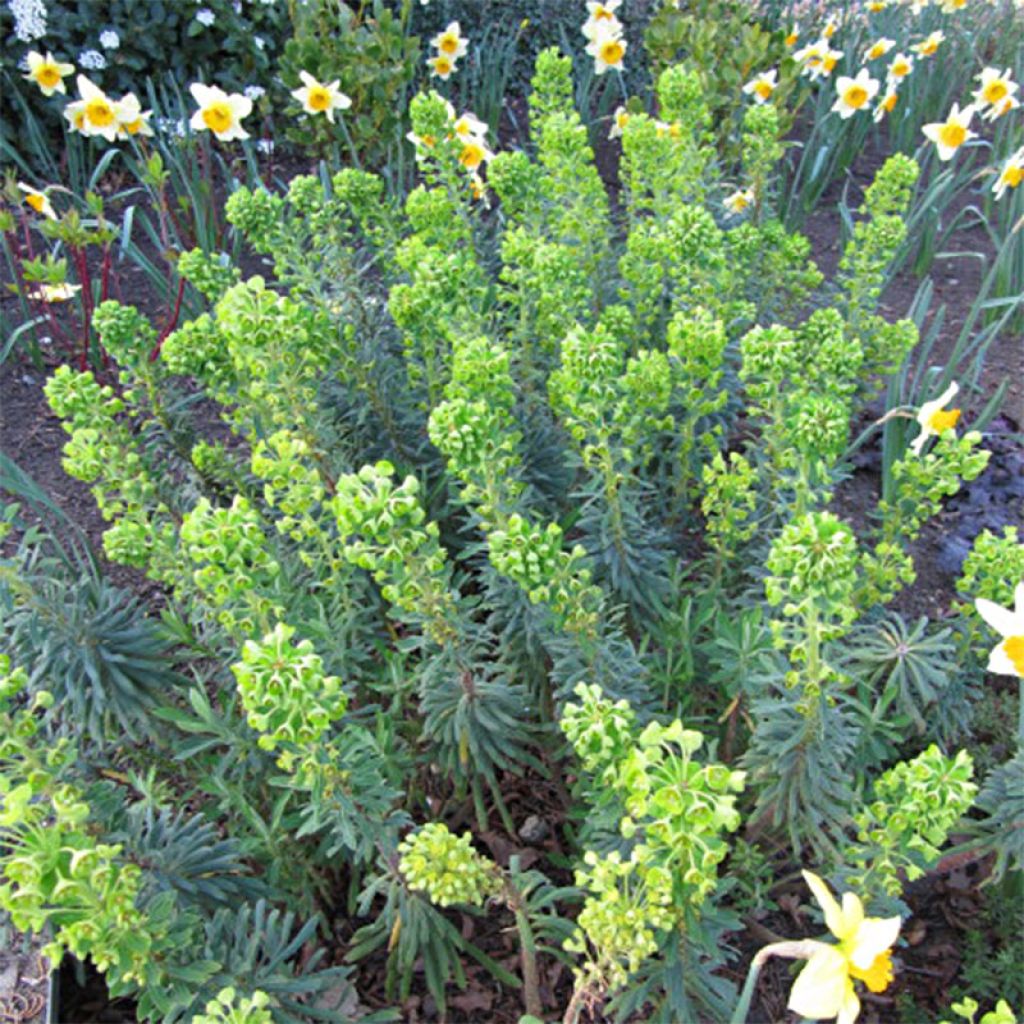

Euphorbia characias Humpty Dumpty - Spurge
Euphorbia characias Humpty Dumpty - Spurge
Euphorbia characias Humpty Dumpty
Mediterranean Spurge, Evergreen Spurge
This item cannot be shipped to the selected country
Delivery charge from €5.90
Delivery to Corse prohibited
More information
Schedule delivery date,
and select date in basket
This plant carries a 12 months recovery warranty
More information
We guarantee the quality of our plants for a full growing cycle, and will replace at our expense any plant that fails to recover under normal climatic and planting conditions.
From €5.90 for pickup delivery and €6.90 for home delivery
Express home delivery from €8.90.
Delivery to Corse prohibited: UE law prohibits the import of this plant from mainland France to Corse as part of the fight against Xylella fastidiosa. Please accept our sincere apologies.
More information

Does this plant fit my garden?
Set up your Plantfit profile →
Description
Of small size, the Euphorbia characias Humpty Dumpty has a bushy and compact habit, with splendid evergreen foliage in blue-green with silver reflections. Very floriferous, it is adorned from April to May with a dense mass of flowers with green-yellow bracts. A striking contrast that will give the garden a Mediterranean touch!
The Euphorbia characias, commonly called Mediterranean spurge or garrigue spurge, belongs to the Euphorbiaceae family. It is native to Mediterranean regions, from Portugal and western Morocco to Turkey.
This Euphorbia characias 'Humpty Dumpty' is a perennial shrub with a woody base, forming a bushy, upright, and compact clump. This variety of Euphorbia characias is small in size, measuring 60 cm (24in) in height and width. It has beautiful evergreen foliage composed of narrow linear leaves in an incredible intense blue-green colour with metallic reflections. From March to May, it offers a very long flowering period with pale yellow-green bracts, beautifully contrasting with the bluish-green colour of the foliage.
Euphorbia characias forms undershrubs with a very exotic appearance, bringing a touch of the Mediterranean to the garden. Highly decorative with its bluish-green foliage and lime-yellow flowering, this Euphorbia 'Humpty Dumpty' is perfectly suited for small gardens due to its small size. It is also well adapted to container cultivation on a terrace or balcony. However, it will also have a beautiful effect when integrated into sunny borders or used as a standalone plant in a rock garden. It will be the perfect companion for shrubs and Mediterranean plants, grasses, and spring bulbs. It thrives in well-drained and sunny soil. For container cultivation, it is advisable to place a thick layer of drainage material, such as clay pellets or gravel, at the bottom of the pot and use light and fertile soil. It is recommended to elevate the pot in winter by placing it on "feet" to promote drainage. The beautiful stems of this spurge can be cut to create stunning colourful bouquets.
Euphorbias contain a white sap called latex, which is highly toxic if ingested and irritating to the skin. Therefore, it is advisable to use gloves, especially when cutting the faded stems.
Report an error about the product description
Euphorbia characias Humpty Dumpty - Spurge in pictures
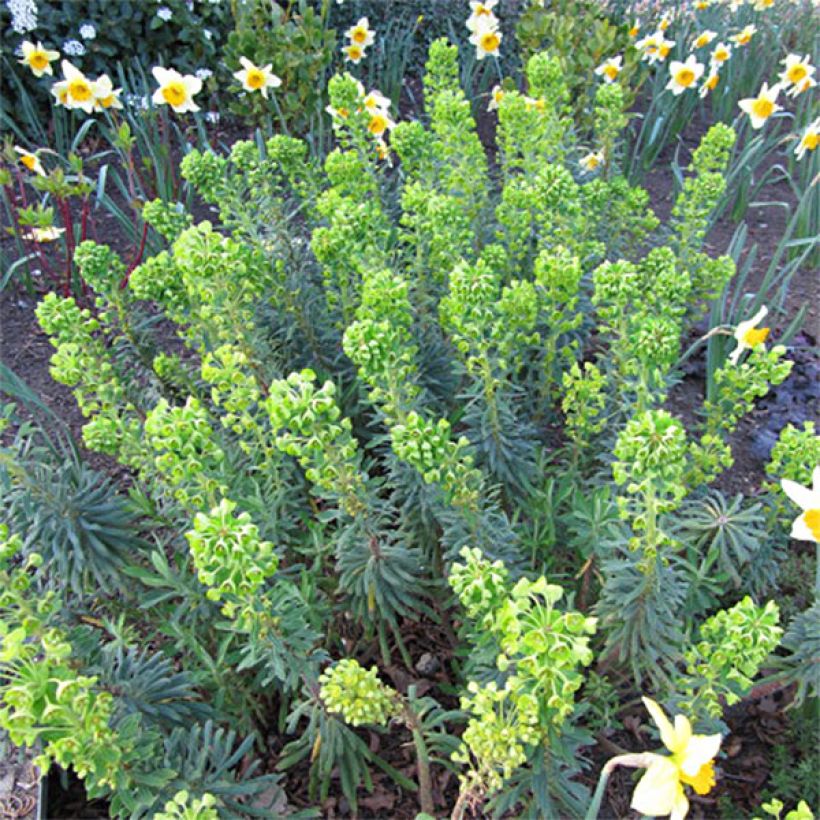

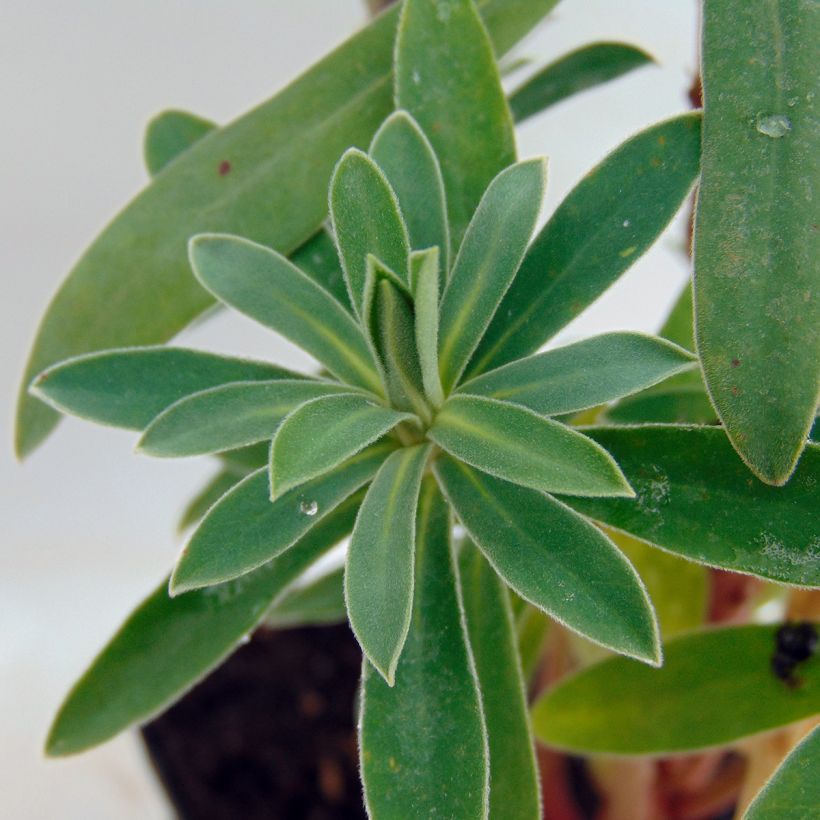



Flowering
Foliage
Plant habit
Safety measures
Botanical data
Euphorbia
characias
Humpty Dumpty
Euphorbiaceae
Mediterranean Spurge, Evergreen Spurge
Mediterranean
atteintescutaneomuqueuses
Cette plante peut provoquer l'apparition de réactions cutanées indésirables, une atteinte des yeux, ou des difficultés respiratoires si elle est ingérée.
Ne la plantez pas là où de jeunes enfants peuvent évoluer. Evitez tout contact avec la peau: privilégiez l'emploi de gants pour la manipuler. En cas de contact, lavez-vous soigneusement les mains et rincez abondamment à l'eau la zone concernée. Lavez les vêtements entrés en contact. En cas de réaction cutanée, contactez votre médecin ou le centre antipoison le plus proche de chez vous. En cas d'atteinte étendue ou de difficultés respiratoires, appelez immédiatement le 15 ou le 112.Pensez à conserver l'étiquette de la plante, à la photographier ou à noter son nom, afin de faciliter le travail des professionnels de santé.
Davantage d'informations sur https://plantes-risque.info
Other Euphorbia - Spurge
Planting and care
The Euphorbia characias 'Humpty Dumpty', easy to grow, withstands temperatures around -15°C (5°F). This Euphorbia of the valleys, enjoying sunny exposures, will preferably suit a semi-shaded position in the Mediterranean. Planting is done in spring or early autumn, in a neutral, regular, sandy, light, poor, rather dry soil, imperatively well-drained. Indeed, this plant from a Mediterranean climate, which thrives in porous soils, above all fears winter humidity. For heavy and wet soils in winter, it is therefore necessary, during planting, to add a thick layer of gravel at the bottom of the hole, and to place it at the base of the plant, around its collar. It is imperative to choose its location in the garden carefully, because once established, the Euphorbia characias does not appreciate being moved, especially if it is a mature plant. Once well established, this Euphorbia of the scrubland tolerates drought very well. Requiring very little maintenance, simply cut back the faded stems to ground level once they are no longer decorative, to maintain a bushy shape.
Planting period
Intended location
Care
-
, onOrder confirmed
Reply from on Promesse de fleurs
Spring flowering perennials
Haven't found what you were looking for?
Hardiness is the lowest winter temperature a plant can endure without suffering serious damage or even dying. However, hardiness is affected by location (a sheltered area, such as a patio), protection (winter cover) and soil type (hardiness is improved by well-drained soil).

Photo Sharing Terms & Conditions
In order to encourage gardeners to interact and share their experiences, Promesse de fleurs offers various media enabling content to be uploaded onto its Site - in particular via the ‘Photo sharing’ module.
The User agrees to refrain from:
- Posting any content that is illegal, prejudicial, insulting, racist, inciteful to hatred, revisionist, contrary to public decency, that infringes on privacy or on the privacy rights of third parties, in particular the publicity rights of persons and goods, intellectual property rights, or the right to privacy.
- Submitting content on behalf of a third party;
- Impersonate the identity of a third party and/or publish any personal information about a third party;
In general, the User undertakes to refrain from any unethical behaviour.
All Content (in particular text, comments, files, images, photos, videos, creative works, etc.), which may be subject to property or intellectual property rights, image or other private rights, shall remain the property of the User, subject to the limited rights granted by the terms of the licence granted by Promesse de fleurs as stated below. Users are at liberty to publish or not to publish such Content on the Site, notably via the ‘Photo Sharing’ facility, and accept that this Content shall be made public and freely accessible, notably on the Internet.
Users further acknowledge, undertake to have ,and guarantee that they hold all necessary rights and permissions to publish such material on the Site, in particular with regard to the legislation in force pertaining to any privacy, property, intellectual property, image, or contractual rights, or rights of any other nature. By publishing such Content on the Site, Users acknowledge accepting full liability as publishers of the Content within the meaning of the law, and grant Promesse de fleurs, free of charge, an inclusive, worldwide licence for the said Content for the entire duration of its publication, including all reproduction, representation, up/downloading, displaying, performing, transmission, and storage rights.
Users also grant permission for their name to be linked to the Content and accept that this link may not always be made available.
By engaging in posting material, Users consent to their Content becoming automatically accessible on the Internet, in particular on other sites and/or blogs and/or web pages of the Promesse de fleurs site, including in particular social pages and the Promesse de fleurs catalogue.
Users may secure the removal of entrusted content free of charge by issuing a simple request via our contact form.
The flowering period indicated on our website applies to countries and regions located in USDA zone 8 (France, the United Kingdom, Ireland, the Netherlands, etc.)
It will vary according to where you live:
- In zones 9 to 10 (Italy, Spain, Greece, etc.), flowering will occur about 2 to 4 weeks earlier.
- In zones 6 to 7 (Germany, Poland, Slovenia, and lower mountainous regions), flowering will be delayed by 2 to 3 weeks.
- In zone 5 (Central Europe, Scandinavia), blooming will be delayed by 3 to 5 weeks.
In temperate climates, pruning of spring-flowering shrubs (forsythia, spireas, etc.) should be done just after flowering.
Pruning of summer-flowering shrubs (Indian Lilac, Perovskia, etc.) can be done in winter or spring.
In cold regions as well as with frost-sensitive plants, avoid pruning too early when severe frosts may still occur.
The planting period indicated on our website applies to countries and regions located in USDA zone 8 (France, United Kingdom, Ireland, Netherlands).
It will vary according to where you live:
- In Mediterranean zones (Marseille, Madrid, Milan, etc.), autumn and winter are the best planting periods.
- In continental zones (Strasbourg, Munich, Vienna, etc.), delay planting by 2 to 3 weeks in spring and bring it forward by 2 to 4 weeks in autumn.
- In mountainous regions (the Alps, Pyrenees, Carpathians, etc.), it is best to plant in late spring (May-June) or late summer (August-September).
The harvesting period indicated on our website applies to countries and regions in USDA zone 8 (France, England, Ireland, the Netherlands).
In colder areas (Scandinavia, Poland, Austria...) fruit and vegetable harvests are likely to be delayed by 3-4 weeks.
In warmer areas (Italy, Spain, Greece, etc.), harvesting will probably take place earlier, depending on weather conditions.
The sowing periods indicated on our website apply to countries and regions within USDA Zone 8 (France, UK, Ireland, Netherlands).
In colder areas (Scandinavia, Poland, Austria...), delay any outdoor sowing by 3-4 weeks, or sow under glass.
In warmer climes (Italy, Spain, Greece, etc.), bring outdoor sowing forward by a few weeks.

































